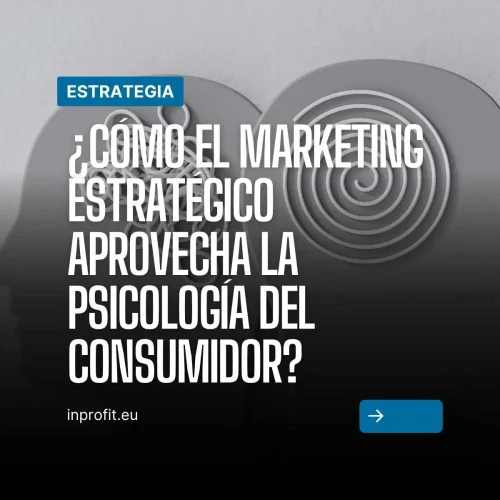Imagine designing a campaign that not only communicates benefits, but connects directly with your audience’s desires, fears and biases. In a world where consumers are saturated with digital stimuli, understanding behavioral psychology has become the key differentiator between an indifferent campaign and one that actually drives conversions.
The power of psychology in strategic marketing
In this article, we will explore how to translate theory into practice: from the principles of nudging and cognitive biases to the emotional triggers that can trigger immediate action. You’ll see concrete examples in copywriting, user experience design and digital campaign strategies, as well as a review of the most powerful tools for testing behavioral hypotheses. If you’re an experienced marketer, you’ll find advanced tactics for moving from mere intent to action.
1. Attention: Triggering interest with nudges and emotional triggers
In the AIDA funnel, the Attention phase is more than attracting attention: it is planting a subconscious seed.
1.1 The “nudge principle”: small signals, big impact
- Positive framing: Present your offer in terms of gain (“Join and get an extra 20%”) rather than loss.
- Price anchoring: Show the most expensive option first to make the average seem affordable.
- Subtle reminders: Use brief push notifications that reaffirm a previous intention, for example: “You still have items in your cart”.
Practical example: A B2B software subscription increased registrations by 15% by using an anchor banner where the premium option was listed at the beginning, making the standard plan look like an immediate savings.
1.2 Emotional triggers: connecting at the subconscious level
- Urgency: Timers and limited offers (“3 units left!”).
- Social proof: Show number of customers or real testimonials.
- Authority: Endorsements from recognized experts or awards.
Success story: An e-commerce of technological gadgets incorporated a countdown timer for new product launches and saw 25% more advance bookings.
2. Interest: Exploiting cognitive biases in copy and design
Once attention has been captured, you must feed interest with elements that exploit our mental shortcuts.
2.1 Scarcity and reciprocity bias
- Scarcity: Messages such as “Today only” or “Limited edition”.
- Reciprocity: Offer free high-value content (e-book, webinar) before requesting data.
2.2 Principle of contrast and unity
- Visual contrast: Highlight the CTA with different spacing and typographies, without breaking the general aesthetics.
- Identity unity: Use inclusive language (“join our community of +10,000 marketers”).
Example of copy:
Descubre las 5 claves psicológicas para duplicar tu tasa de apertura de emails. Reserva tu plaza gratis en el webinar y llévate un toolkit exclusivo.
3. Desire: Designing experiences that facilitate decision making.
The time has come to strengthen internal motivation and reduce friction.
3.1 Choice architecture and cognitive load reduction
- Limited options: Maximum 3 alternatives to avoid analysis paralysis.
- Smart Preset: Mark the option you want to push as “default”.
3.2 Storytelling and metaphors
- Customer-centric stories: Relate a specific before and after.
- Familiar metaphors: Associations that facilitate understanding (“Your business = high-speed engine; this plugin = turbo”).

Narrative example:
“Maria, marketing director of a scale-up, doubled her lead rate in 30 days by applying these three psychological principles. Today we tell you what her secret recipe was.”
4. Action: Turning Points and Behavioral Tests
Turning intent into purchase requires removing barriers in the last mile.
4.1 Persuasive microcopy in forms and CTAs
- Simple and straightforward language: “Start for free” vs. “Submit form”.
- Trust messages: “No credit card” or “Easy cancellation”.
4.2 Experimentation and continuous validation
- Focused A/B testing: test variations of biases (e.g., scarcity vs. urgency).
- Heatmaps and session recordings: identifies frictions in the flow.
- Surveys in context: ask directly why they dropped out of the process.
Case study: A fintech reduced registration abandonment by 18% after replacing “Complete your application” with “Start your financial journey”.
5. Tools and frameworks for testing consumer psychology
To scale these tactics, you need tools that validate behavioral hypotheses.
| Tool | Main function | Ideal for |
|---|---|---|
| Optimizely | A/B testing and customization | Multivariate test |
| Hotjar | Heatmaps, surveys and session recordings | Analyze frictions |
| VWO | A/B testing, URL splitting and funnel analysis | Continuous experimentation |
| Crazy Egg | Scrollmaps and click snapshots | UX and landing design |
| Typeform | Conversational surveys | Qualitative feedback |
Applying strategies
Integrating consumer psychology into your strategy is not a luxury, it is a necessity to stand out in saturated environments. From the first nudge to the final microcopy, every detail can tip the balance towards conversion.
Ready to transform your marketing with behavioral science?
Find out more about Psychology Applied to Marketing.
- Request a personalized workshop with our team of experts today.
Turn intent into action, and take your campaigns to the next level.




